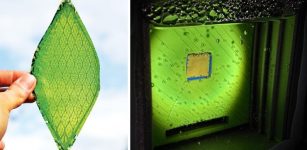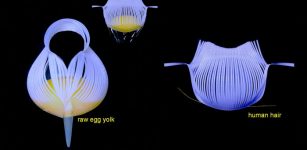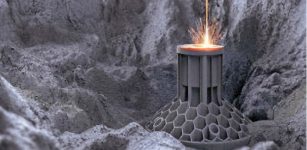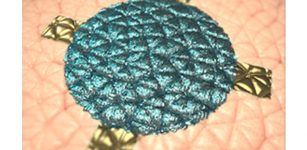New Material 10 Times Darker Than Any Other Black – Created
Eddie Gonzales Jr. – MessageToEagle.com – A material that is 10 times blacker than anything that has previously been reported, has been created by MIT engineers.
The material is made from vertically aligned carbon nanotubes, or CNTs — microscopic filaments of carbon.
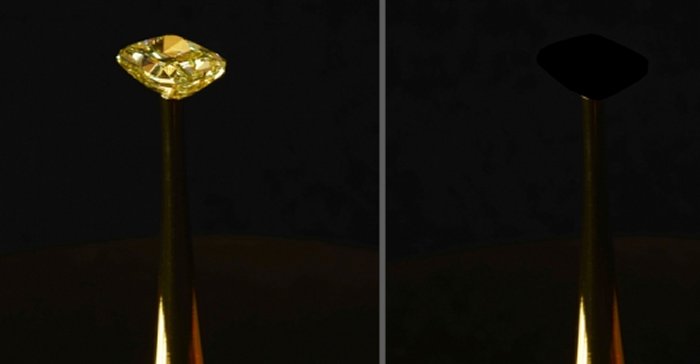 A 16.78-carat natural yellow diamond from LJ West Diamonds (left), is coated with a new carbon nanotube-based material that is the blackest material on record (the covered diamond, shown at right). Image: R. Capanna, A. Berlato, and A. Pinato
A 16.78-carat natural yellow diamond from LJ West Diamonds (left), is coated with a new carbon nanotube-based material that is the blackest material on record (the covered diamond, shown at right). Image: R. Capanna, A. Berlato, and A. Pinato
The material features a 16.78-carat natural yellow diamond from LJ West Diamonds, estimated to be worth $2 million, which the team coated with the new, ultrablack CNT material.
“There are optical and space science applications for very black materials, and of course, artists have been interested in black, going back well before the Renaissance,” Brian Wardle, professor of aeronautics and astronautics at MIT, said in a press release.
“Our material is 10 times blacker than anything that’s ever been reported, but I think the blackest black is a constantly moving target. Someone will find a blacker material, and eventually, we’ll understand all the underlying mechanisms, and will be able to properly engineer the ultimate black.”
The CNT material, aside from making an artistic statement, may also be of practical use, for instance in optical blinders that reduce unwanted glare, to help space telescopes spot orbiting exoplanets.
Wardle and Kehang Cui, now a professor at Shanghai Jiao Tong University, didn’t intend to engineer an ultrablack material.
However, in further experiments, instead, they were experimenting with ways to grow carbon nanotubes on electrically conducting materials such as aluminum, to boost their electrical and thermal properties.
But in attempting to grow CNTs on aluminum, Cui ran up against a barrier, literally: an ever-present layer of oxide that coats aluminum when it is exposed to air. This oxide layer acts as an insulator, blocking rather than conducting electricity and heat. As he cast about for ways to remove aluminum’s oxide layer, Cui found a solution in salt, or sodium chloride.
By removing the oxide layer, the researchers were able to grow carbon nanotubes on aluminum, at much lower temperatures than they otherwise would, by about 100 degrees Celsius.
What surprised them was the material’s color. The results showed that the material absorbed at least 99.995 percent of incoming light, from every angle. In other words, it reflected 10 times less light than all other super-black materials, including Vantablack.
For now, the scientists are uncertain why they were able to produce the blackest black.
There is a lack of mechanistic understanding as to why this material is the blackest. That needs further study,” Wardle explained.
Written by Eddie Gonzales Jr. – MessageToEagle.com Staff


